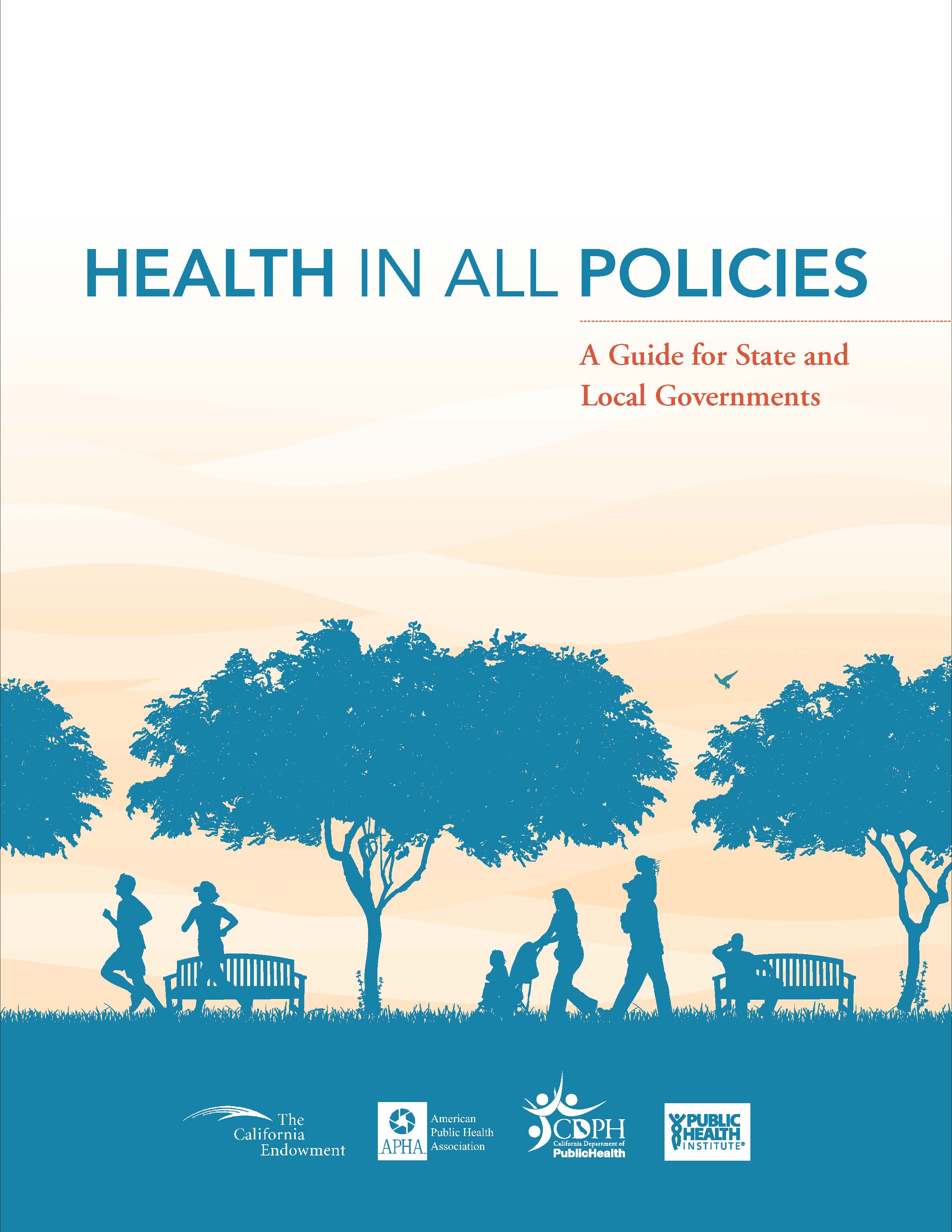Health Equity Resource Library
Health in All Policies: A Guide for State and Local Governments
Public Health Institute (PHI)
Health in All Policies: A Guide for State and Local Governments (PDF) describes the Health in All Policies approach to health improvement and outlines action steps for implementing this strategy.
This comprehensive guide provides direction for state and local government public health leaders who are interested in working with non-traditional health partners like housing, transportation, education, air quality, parks, criminal justice, energy and employment agencies.
It is divided into three main parts. Part I describes the concept of Health in All Policies (HiAP), Part II covers the "nuts and bolts" of HiAP work, and Part III is a case study.
This guide is a collaborative product of the American Public Health Association (APHA), the Public Health Institute and the California Department of Health. The guide draws heavily on the experiences of the California Health in All Policies Task Force.
When to use
Part I of the guide can be useful in providing foundational information on the concept and elements of Health in all Policies (HiAP). If your agency is ready to begin working on HiAP, Part II can serve like a work plan for action. Many of the sections in Part II conclude with a series of critical thinking questions to consider as you apply a HiAP approach called "Food for Thought." The table on pages 25-26 in Part II can be useful as it highlights specific government functions and the opportunity that may be present for a HiAP approach. It also details possible action steps. Section seven contains a lot of helpful information on tailoring messaging to support HiAP efforts.
Things to consider
The authors indicate that the guide can be reviewed in order or reviewed separately as well.
Use this resource
Find similar resources
- By practice: influence public policy
- By type: guides/toolkits, case studies
- By goal: work across sectors
